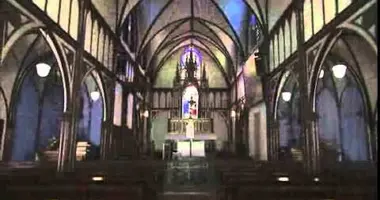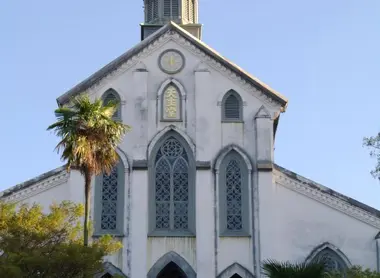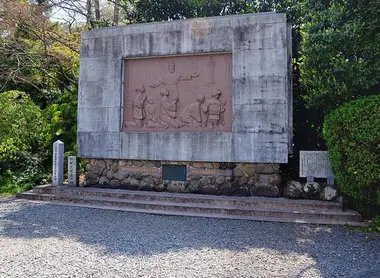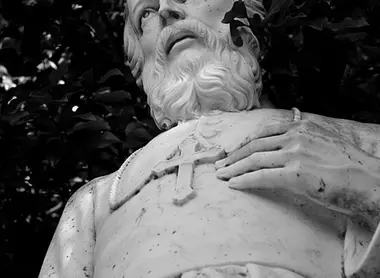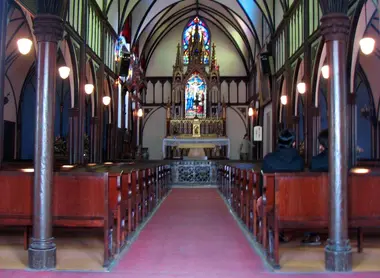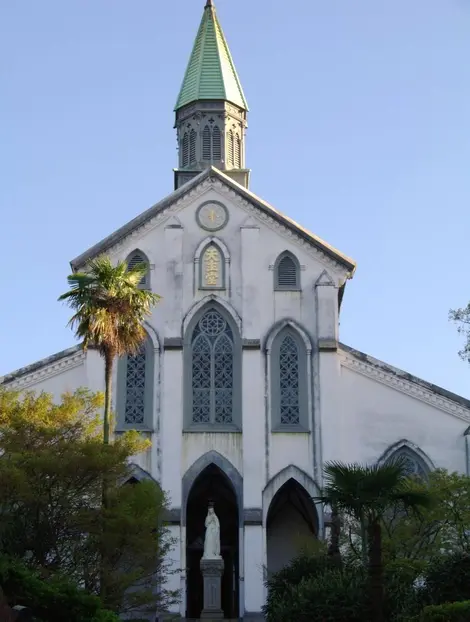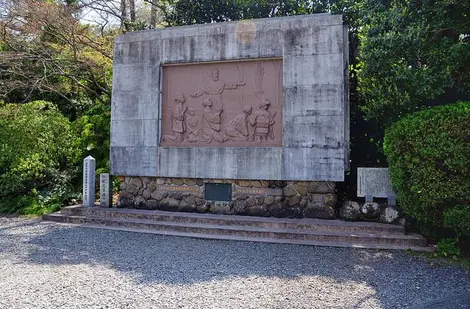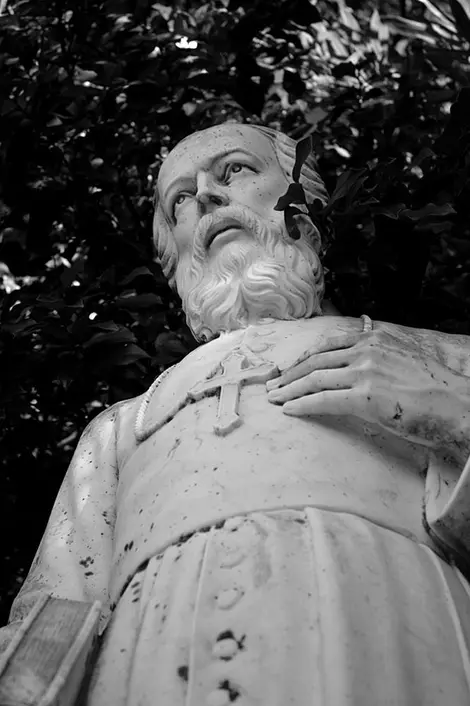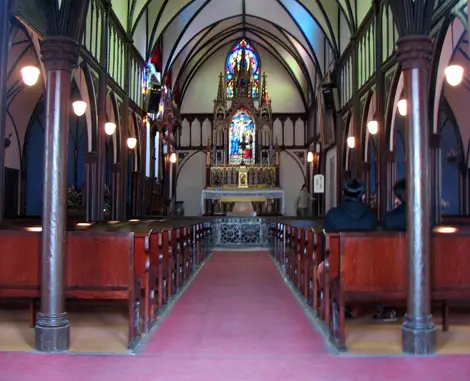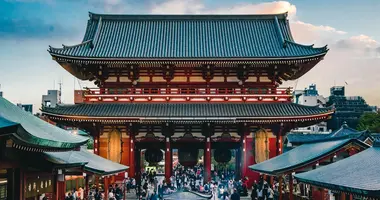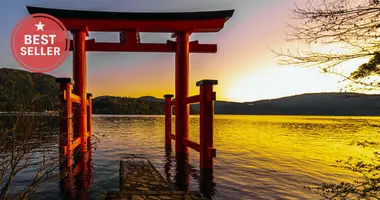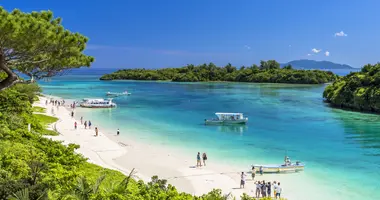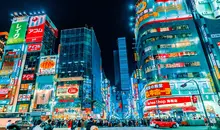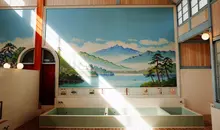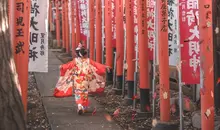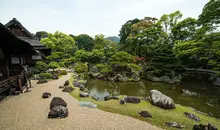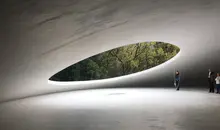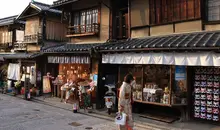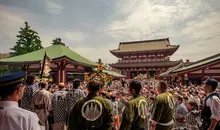Ōura Nagasaki: Basilica of the Twenty-Six Martyrs of Japan, witness to Christian history in Japan
- Published on : 03/04/2025
- by : G.L.
- Youtube
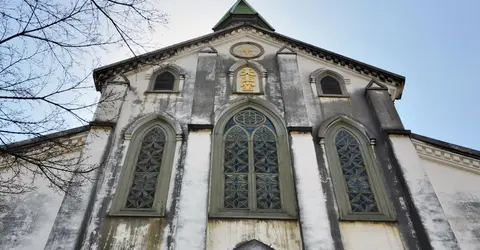
Facade of Oura Church in Nagasaki
jpellgen
At the foot of Glover Garden in Nagasaki, an elegant water-green steeple rises into the sky: it's the Church of Oura (大浦天主堂, Ōura Tenshudō), also known as the Basilica of the Twenty-Six-Martyrs of Japan. Considered Japan's oldest church, this work of French missionaries is a unique testimony to the troubled history of Christianity in the Japanese archipelago. Completed in 1864, it symbolizes Japan's reopening to the world after the period of sakoku isolation and the return of religious freedom. It became a co-cathedral of the Nagasaki archdiocese and was elevated to the rank of minor basilica in 2016. Today, it is listed as both a Japanese National Treasure and a UNESCO World Heritage Site among the "Hidden Christian Sites of the Nagasaki Region".
History and construction of Oura Church: Japan's oldest church
The story of Oura Church begins in 1863, when two French priests from the Missions étrangères de Paris, Fathers Louis Furet and Bernard Petitjean, landed in Nagasaki. They arrived at a turning point in Japanese history: the country was gradually opening up to the world after more than two centuries of voluntary isolation (sakoku), and Christianity was beginning to be tolerated once again.
These missionaries had the ambition of rekindling the Christian flame in Japan, and decided to build a church in honor of the 26 martyrs of Japan, the nine European priests and seventeen Japanese Christians crucified in 1597 on the orders of Toyotomi Hideyoshi. Construction was entrusted to Koyama Hidenoshin, Glover Garden's master carpenter, and was completed in 1864. The church was officially inaugurated on February 15, 1865 by the French consul Léon Dury.
Originally, Oura was a small wooden church with three naves and three octagonal towers, much more modest than the one that was to replace it. The current building, dating from around 1879, is a much more imposing Gothic-style basilica. This version was built in white stucco brick with five naves, vaulted ceilings and a distinctive octagonal tower. Its design was most probably inspired by a Belgian plan used by Catholic missionaries for a church previously built in Osaka. The charm of this church lies in its harmonious blend of Western architecture and Japanese sensibility, giving it a unique identity.
The Basilica of the Twenty-Six Japanese Martyrs: architecture and features
Oura Church stands majestically at the foot of Yamate Hill, overlooking the port of Nagasaki. Its Western Gothic Revival architecture stands out in the Japanese urban landscape. With its white stucco façade and distinctive octagonal bell tower, it is an outstanding example of Western architecture in Japan.
The current structure, larger than the original, features five naves and vaulted ceilings typical of the Gothic style. Inside, magnificent stained glass windows imported from France filter the light, creating a meditative atmosphere conducive to prayer. These colorful windows depict religious scenes and contribute to the beauty of the building.
A particularly interesting feature of some of the region's Christian churches, though less present in Oura, which follows more the Western model, is the fusion of Western and Japanese architectural elements. For example, the Sakitsu church, also a UNESCO World Heritage Site, has a tatami-covered floor, symbolizing this meeting of Japanese and Western cultures.
The basilica also houses a white marble statue of the Virgin Mary, imported from France to commemorate the discovery of the hidden Christians. A bronze relief in the church courtyard depicts this historic scene. The architectural ensemble bears witness to the Western influence on Japan during the Meiji era, while retaining its own unique identity.
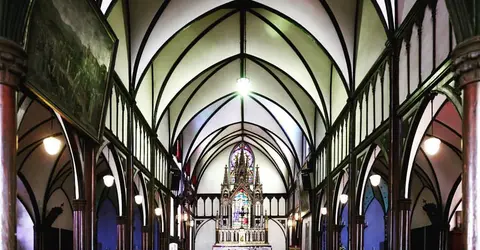
Inside the Oura church
Tim Franklin Photography
The discovery of the hidden Christians: a "miracle of the Orient
On March 17, 1865, just a few weeks after the completion of the church, an extraordinary event occurred, later described by Pope Pius IX as the "Miracle of the Orient". That day, Father Petitjean spotted a group of around fifteen Japanese standing in front of the church. As he knelt before the altar, an elderly woman in the group approached him and uttered these historic words: "We feel in our hearts as you do. Where is the statue of the Virgin Mary?"
This woman and her companions came from the nearby village of Urakami. To the missionary's amazement, they turned out to be Kakure Kirishitan (hidden Christians), descendants of the first Japanese Christians who had preserved their faith in hiding for almost 250 years, since the persecution and banning of Christianity by the Tokugawa shogunate in 1614.
To make sure they were talking to a genuine Catholic priest, these hidden Christians asked him three crucial questions according to the tradition handed down by their ancestors: "Are you celibate?", "Does your leader reside in Rome?" and "Do you venerate the Virgin Mary?" Father Petitjean answered in the affirmative to each of these questions, confirming that he was indeed a Roman Catholic priest.
Soon after this historic encounter, thousands of hidden Christians began to emerge from the shadows, revealing the existence of entire communities who had preserved their Christian faith through centuries of prohibition. The news reached Pope Pius IX, who, amazed by this extraordinary discovery, described it as "the miracle of the Orient" in a special message addressed to Father Petitjean on January 8, 1867.
Heritage recognition: from national treasure to UNESCO World Heritage Site
The exceptional historical and architectural value of the Church of Oura has earned it numerous official recognitions over the years. In 1933, it became the first Western-style building to be classified as a National Treasure of Japan, a prestigious distinction reconfirmed on March 31, 1953 under the 1951 Law for the Protection of Cultural Property. This recognition testifies to the importance Japan attaches to this monument, a symbol of its openness to the Western world and its Christian history.
For many years, the Church of Oura remained the only Western-style building to enjoy the status of Japanese National Treasure, until 2009, when the neo-Baroque Akasaka Palace was also classified. This unique distinction underlines the special place Oura Church occupies in Japan's architectural and cultural heritage.
In 2018, the recognition of Oura Church reached a new milestone with its inscription on the UNESCO World Heritage List as part of the "Hidden Christian Sites of the Nagasaki Region". This group comprises 12 different sites, including churches, villages and the remains of Hara Castle, which collectively bear witness to the unique history of hidden Christians in Japan.
More recently, in 2016, Pope Francis elevated the Church of Oura to the rank of Minor Basilica, further strengthening its position within the worldwide Catholic Church. It thus became Japan's first minor basilica, an honor that recognizes its historic importance for Catholicism in the Japanese archipelago.
Practical information for visiting Oura church
For visitors wishing to discover this architectural and historical gem, here's some practical information:
Address: Oura Church is located at the foot of Glover Garden, in the Minami-Yamate district of Nagasaki. It's just a 5-minute walk from the Kôshibyô temple and Nagasaki harbor.
Contact: For further information, please call the church on +81 (0) 95-823-2628.
Opening hours: The church is open daily from 8am to 6pm.
Entrance fee: 300 yen (approx. €3) for adults. This fee also includes access to the adjacent Christian Museum, which features exhibitions on the history of Christianity in Japan.
Access: To reach the church, take the streetcar to the Oura Tenshudô Shita or Ishibashi stop. The church is also within walking distance of many of Nagasaki's tourist attractions.
During your visit, please bear in mind that the church is first and foremost a place of worship and contemplation. We recommend that you wear appropriate clothing that covers your shoulders. Photographs are generally permitted inside, but take care not to disturb the faithful during prayer.
Christianity in Nagasaki: persecution and rebirth
The history of Christianity in Nagasaki is inseparable from that of its martyrs. It began in the mid-16th century, when Portuguese missionaries led by Francis Xavier landed on the island of Kyushu to evangelize what they saw as a "new world". Success was rapid: from Kagoshima to Fukuoka, several daimyo (feudal lords) converted, followed by the inhabitants of their fiefdoms, and numerous seminaries and churches were established.
But in 1587, Toyotomi Hideyoshi ordered the expulsion of the missionaries, perceiving the growing influence of the Jesuits and Franciscans as a threat to his power. Then, in 1597, he had 26 Christians crucified in Nagasaki (9 European missionaries and 17 Japanese Christians), who became the "26 martyrs of Japan" celebrated by the Church of Oura.
The situation worsened in 1614, when the Tokugawa shogunate proclaimed a total ban on Christianity in the archipelago. This marked the beginning of a ferocious crackdown on those who refused to recant their faith. Christians were forced to trample on holy images (a practice known as fumi-e) to prove that they had renounced Christianity. Those who refused were tortured or executed, often by public crucifixion.
The Shimabara Rebellion of 1637-1638, when Kyushu's predominantly Christian population rose up against the shogunate, marked a turning point. The insurrection was brutally crushed, claiming over 37,000 lives. Following this event, persecution of Christians intensified, and Japan closed itself completely to foreigners (the Sakoku period).
To survive, Japanese Christianity evolved into syncretic forms, the Kakure Kirishitan, with influences from Buddhism, Taoism and Shinto. These hidden Christians passed on their faith from generation to generation, sometimes using disguised religious objects such as a statue of the Virgin Mary resembling the Buddhist goddess Kannon.
It wasn't until the Meiji Restoration and the official re-admission of Christianity in 1873 that these hidden Christians were finally able to practice their faith in the open. This period saw the construction of numerous churches in the Nagasaki region, testifying to the rebirth of Christianity in Japan after centuries in hiding. To find out more about this fascinating history, please consult History of Japan: a simplified chronology.
Other Christian sites to discover in the Nagasaki region
The Nagasaki region abounds in sites linked to the history of Christianity in Japan. Here are a few of the most noteworthy, which together with the Church of Oura make up the "Hidden Christian Sites of the Nagasaki Region", a UNESCO World Heritage Site:
Urakami Cathedral: Situated not far from the hypocenter of the atomic bomb of August 9, 1945, this imposing red-brick cathedral was almost entirely destroyed during the bombing and then rebuilt. It symbolizes both the history of religious persecution and the atomic tragedy that struck Nagasaki.
Sakitsu village: This picturesque fishing village in Amakusa is home to a Catholic church built in 1934 on the very site where Christians were once forced to trample on holy images (fumi-e). Its tatami-covered floor bears witness to the fusion of Japanese and Western cultures.
The remains of Hara Castle: Located in Minami-Shimabara, this castle was the scene of the last battle of the Shimabara-Amakusa rebellion (1637-1638), during which thousands of Christians were massacred. Today, the ruins of the castle offer an impressive panorama of the bay.
The Goto Islands: This isolated archipelago was a refuge for many Christians during the period of persecution. There are several remarkable churches, including Nokubi on Nozaki Island and Gorin Church on Hisaka Island, one of the oldest wooden churches in the country.
The Twenty-Six Martyrs Museum: Located near the site of the martyrdom of 26 Christians in 1597, this museum displays objects and documents relating to the history of Christianity in Japan. A memorial has also been erected here.
For a deeper immersion into this fascinating story, Martin Scorsese's film Silence (2017), offers a poignant depiction of Japan's hidden Christians in the 17th century, based on Shūsaku Endō's novel of the same name.
Together, these various sites form a unique testimony to the perseverance of the Christian faith in the face of persecution, as well as to the encounter between Western and Japanese cultures. They tell a story of resistance, adaptation and ultimately religious rebirth that constitutes an important but often overlooked chapter in Japanese history.
Address, timetable & access
Address
Phone
+81 (0) 95-823-2628Timetable
Every day from 8 a.m. to 6 p.mPrice
300 yen (adults), about €3Access
By streetcar: Oura Tenshudô Shita or Ishibashi stop
On foot: 5 min from Kôshibyô temple and Nagasaki harbour
